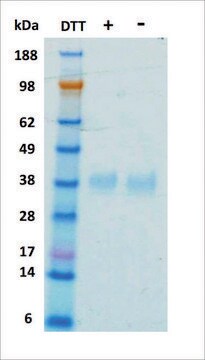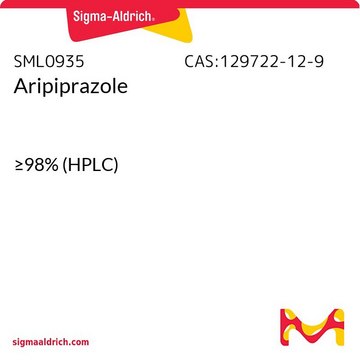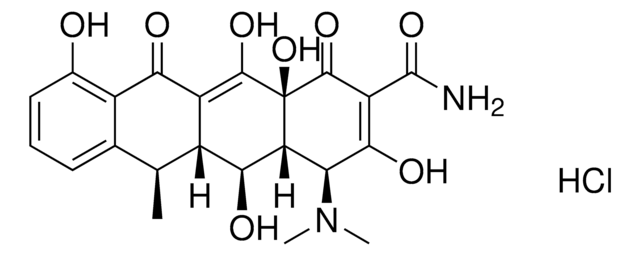E5546
Erythropoietin (EPO) human
recombinant, expressed in HEK 293 cells, suitable for cell culture
Sinonimo/i:
EPO, epoetin, hematopoietin, hemopoietin
About This Item
Prodotti consigliati
Ricombinante
expressed in HEK 293 cells
Saggio
≥98% (SDS-PAGE)
Stato
lyophilized powder
Potenza
≤2.5 ng/mL ED50 (measured in a cell proliferation assay using TF-1 human cells)
tecniche
cell culture | mammalian: suitable
Impurezze
Endotoxin, tested
Temperatura di conservazione
−20°C
Descrizione generale
Azioni biochim/fisiol
EPO consists of 165 amino acids and has a high carbohydrate content, of both N-linked and O-linked types. The oligosaccharide chains are responsible for EPO production, secretion, longevity, and functioning. The biological activity of EPO depends upon two disulfide bonds, one formed between cysteine7 and cysteine160, and the other between cysteine29 and cysteine33. Thus, EPO proper folding, glycosylation and disulfide bonds formation are crucial for its function.
EPO was found to downregulate HIF-1α in the diabetic rat model. EPO helped maintaining the homeostasis of intracellular zinc in retinal cells, altered as a result of diabetes, by restoring Zinc transporter 8 (ZnT8) expression.
Codice della classe di stoccaggio
11 - Combustible Solids
Classe di pericolosità dell'acqua (WGK)
WGK 2
Punto d’infiammabilità (°F)
Not applicable
Punto d’infiammabilità (°C)
Not applicable
Scegli una delle versioni più recenti:
Certificati d'analisi (COA)
Non trovi la versione di tuo interesse?
Se hai bisogno di una versione specifica, puoi cercare il certificato tramite il numero di lotto.
Possiedi già questo prodotto?
I documenti relativi ai prodotti acquistati recentemente sono disponibili nell’Archivio dei documenti.
I clienti hanno visto anche
Il team dei nostri ricercatori vanta grande esperienza in tutte le aree della ricerca quali Life Science, scienza dei materiali, sintesi chimica, cromatografia, discipline analitiche, ecc..
Contatta l'Assistenza Tecnica.












